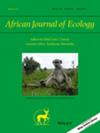“(象)牛是如何吃卷心菜的”:南非亚热带丛林生物群中有大象存在的虎sonia spicata
IF 1.1
4区 环境科学与生态学
Q4 ECOLOGY
引用次数: 0
摘要
通过样带调查,研究了15年来(2008-2023年)非洲大草原象(Loxodonta africana)食草性对南非亚热带灌丛生物群系内卷心菜树(Cussonia spicata)的影响。树木密度降低80%,从每0.1 km2 14.3棵降至1.4棵,平均高度显著降低。值得注意的是,随着卷心菜树数量的减少,大象的觅食强度也在下降。陡峭地区的树木存活得更好,这表明它们是天然的避难所。我们的研究结果强调了有针对性的保护策略和长期生态系统监测的迫切需要,以保护这些封闭保护区的关键物种。本文章由计算机程序翻译,如有差异,请以英文原文为准。
‘How the (Elephant) Cow Ate the Cabbage’: Cussonia spicata in the Presence of Elephants in the Subtropical Thicket Biome, South Africa
Using transect surveys, we examined the effects of African savannah elephant (Loxodonta africana) herbivory on cabbage trees (Cussonia spicata) within South Africa's Subtropical Thicket Biome over 15 years (2008–2023). There was an 80% reduction in tree density, from 14.3 to 1.4 trees per 0.1 km2, and a significant decrease in average height. Notably, as cabbage tree numbers declined, elephant browsing intensity also decreased. Trees in steeper areas survived better, suggesting these act as natural refuges. Our findings highlight the critical need for targeted conservation strategies and long-term ecosystem monitoring to preserve these keystone species in enclosed reserves.
求助全文
通过发布文献求助,成功后即可免费获取论文全文。
去求助
来源期刊

African Journal of Ecology
环境科学-生态学
CiteScore
2.00
自引率
10.00%
发文量
134
审稿时长
18-36 weeks
期刊介绍:
African Journal of Ecology (formerly East African Wildlife Journal) publishes original scientific research into the ecology and conservation of the animals and plants of Africa. It has a wide circulation both within and outside Africa and is the foremost research journal on the ecology of the continent. In addition to original articles, the Journal publishes comprehensive reviews on topical subjects and brief communications of preliminary results.
 求助内容:
求助内容: 应助结果提醒方式:
应助结果提醒方式:


